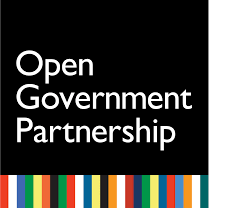Open Government as a Path to Restoring Trust in Institutions
 Trust in institutions is something that cuts across our lives as citizens. It’s a kind of presence—an “underlying something”—that, although not always put into words, shows up in how we relate to public life. In how we vote—or choose not to. In what we expect from the political and social system, and from those who represent it.
Trust in institutions is something that cuts across our lives as citizens. It’s a kind of presence—an “underlying something”—that, although not always put into words, shows up in how we relate to public life. In how we vote—or choose not to. In what we expect from the political and social system, and from those who represent it.
Trust is the fertile ground on which something shared can grow. It allows us to coexist, to organize, to believe that participating, voicing our opinions, or trying to bring about social change actually matters. It’s not naivety—it’s a minimal foundation. If we don’t trust institutions to listen, protect, or be held accountable, then why bother engaging at all? Why insist?
The truth is that, for years now, that common ground has been cracking. And this isn’t new. Corruption, decisions that feel disconnected from citizens, promises that go unfulfilled… Gradually, a familiar sense takes hold—that “everything has already been decided,” that “whatever we do doesn’t really matter.” And with that comes fatigue, apathy, distance.
So how do we rebuild that bond? One possible path lies in rethinking how institutions are designed and opened up—in creating and implementing mechanisms that pull them out of the logic of being closed-off, opaque, and inaccessible, and instead help them function as they should: as living, responsive tools in the service of the common good. This is where an approach comes into play that you may not be familiar with, but that could make a real difference: open government.
The Open Government Partnership (OGP) is a global initiative that brings together governments and civil society to promote concrete reforms centered on three key principles: transparency, accountability, and public participation. Launched in 2011, the OGP operates as a voluntary policy framework where governments publicly commit to a series of actions—so-called Action Plans—and where those commitments are tracked, evaluated, and openly discussed.
Far from being a mere declaration of good intentions, the OGP provides a formal, structured space to channel social demands. Rather than letting public pressure disperse or fade, it offers institutional pathways to collaborate, demand, and transform.
But what does the OGP actually do?
The OGP doesn’t impose laws or legal sanctions. But it does shape political incentives by offering:
- A framework for public cooperation and commitment.
- A platform to make progress—or lack thereof—visible.
- A reputation-based incentive system that bolsters the image of countries that follow through… and exposes those that only pretend.
We could say that it represents a model of governance grounded in institutional soft power: the power of shared rules, mutual oversight, and structured social pressure.
In Spain, for example, the OGP has supported tangible initiatives such as the creation of the Open Government Forum, which brings together public representatives and civil society actors to design and assess policy commitments. It has also backed key laws such as the 2013 Transparency Law. These efforts have led to improved digital transparency portals and genuine opportunities for citizen participation, including forums, public consultations, and collaborative processes.
In a time of democratic fatigue, the OGP is no magic solution—but it is a powerful institutional tool for opening windows where others close doors. What’s at stake isn’t just making bureaucracy more efficient, but rebuilding democratic trust from the ground up. And today, more than ever, that is urgent.
So—had you heard of the OGP before?
